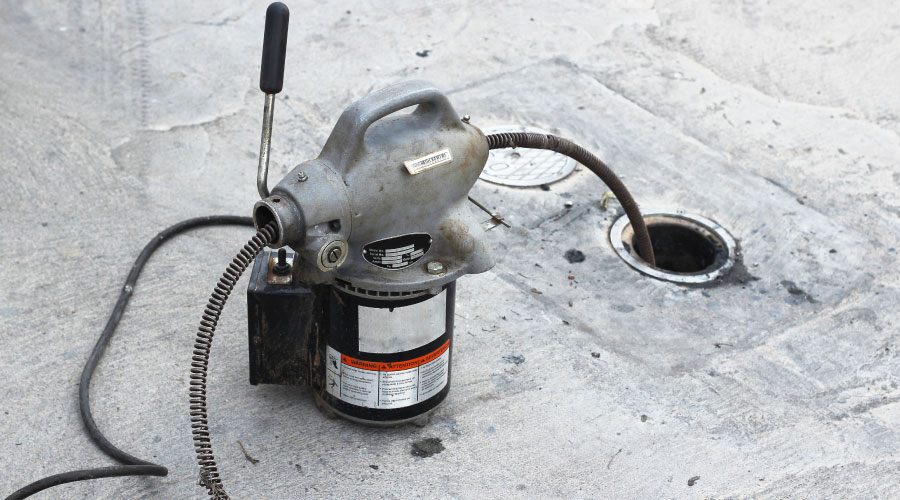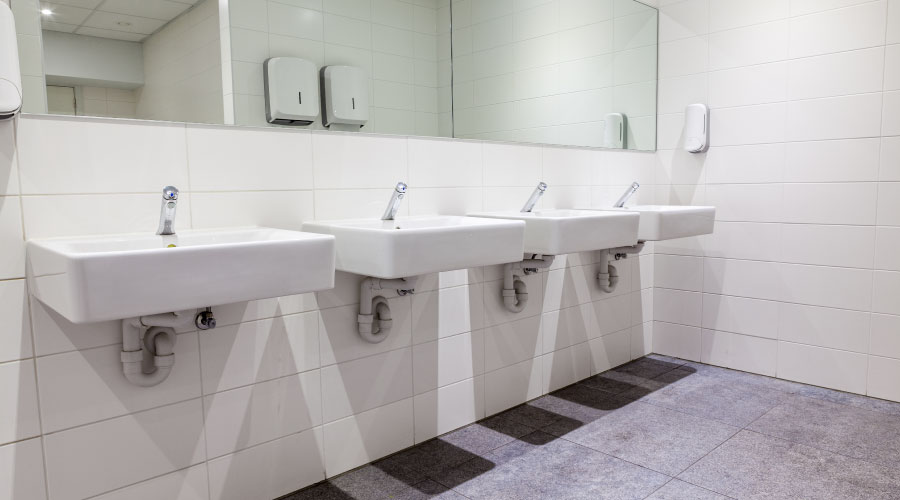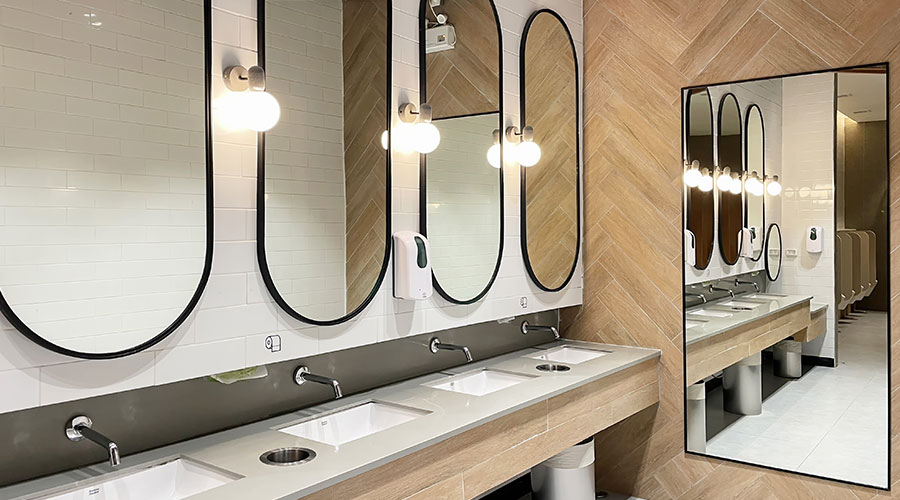Touch-Free Systems Can Help Keep Up With High Restroom Traffic Volume
6. Take a Close Look at Technology. Touch-free systems offer big benefits to high-traffic restrooms. "Electronic flush is a big improvement, and no-touch faucets make everything faster," Kier says. Previously, "no one would flush, and if they did, they used their foot, and it would break the valves." Hand dryers also help the maintenance staff, because "it's impossible to keep up with the volume of towels people use."
Sensors can be battery-operated (which requires someone to check and replace them) or hard-wired (which would be a problem in case of power failure). Allacher says that most facilities are choosing batteries and adding one more item to the maintenance crew's checklist.
The sensor at a sink must also allow the water to run long enough to get hot, although Allacher says that a recirculation line can solve that problem. Tepid water out of the hot tap is a bigger problem in small, little-used restrooms, she says.
7. Make Maintenance Top of Mind. Discussions with the maintenance staff can help educate architects about the need to have restrooms that are easy to clean, with wall-mounted toilets or partitions hung from the ceiling. Toilet-paper dispensers that handle big rolls also mean less frequent changes.
Wall-mounted toilets, however, may pose a challenge with very heavy users. ADA-compliant stalls are also frequently designed to meet the needs of the bariatric population, often including floor-mounted toilets.
Lundeen stresses the importance of talking to custodial staff when designing a new facility, so that an architect learns to add a faucet that can take a hose, for instance, or the best location for an outlet. "Just as important as the restroom itself are the supplies for the restroom," with a supply closet nearby, he says. He has also learned to "make sure that maintenance people can get at things" — e.g., no hard plaster ceilings, for ease of access when necessary. Walls must be a washable material, and "if it's going to be metal, it's got to be stainless steel."
However, Remenschneider says that a hard-pan ceiling is preferable in a school, to keep kids out. "It's amazing what kids will do up there. You've got to be ahead of them."
David Lewellen is a writer who covers facility issues.
Related Topics:














